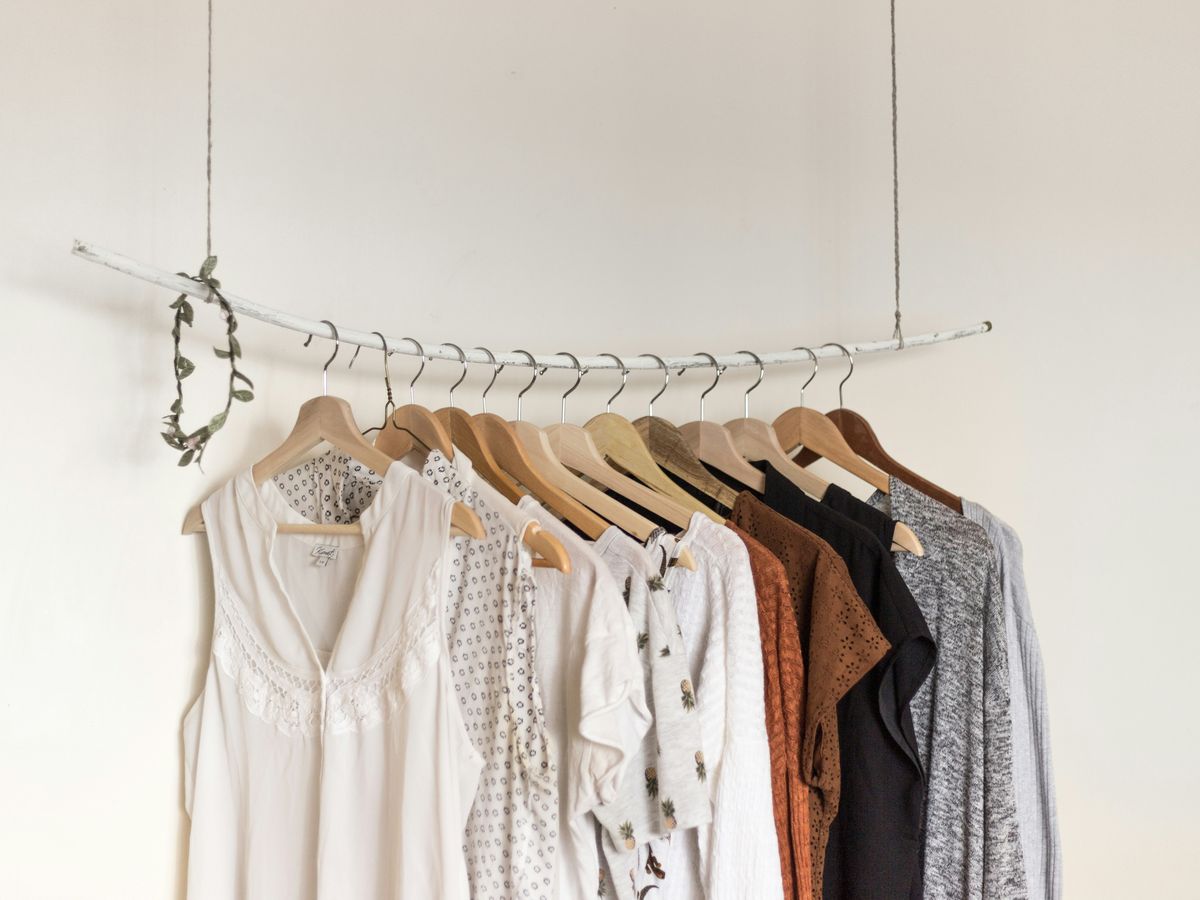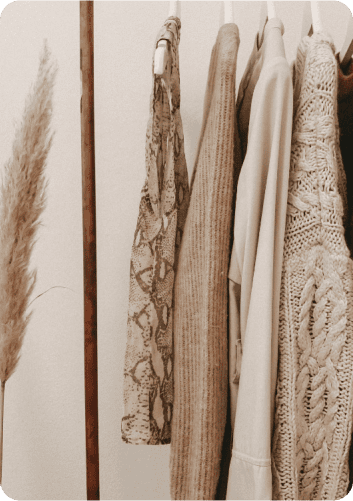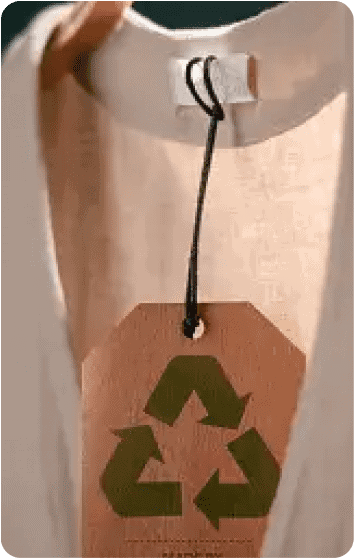In recent years, sustainable fashion has gained significant momentum as individuals seek innovative ways to reduce their environmental impact while expressing their unique sense of style. One emerging trend within sustainable fashion is the rise of upcycled clothing. Upcycling involves transforming discarded garments or materials into new, higher-value pieces, breathing new life into old fabrics, and diverting them from landfills.
In this article, we will delve into the world of upcycled fashion, exploring the concept of upcycling, the benefits it brings to the environment, and inspiring ways to upcycle your clothing or find one-of-a-kind upcycled treasures in the realm of secondhand and thrift fashion.

What is Upcycling?
Upcycling is a creative and innovative process of transforming discarded or unused materials into new, higher-value products or items with improved functionality or aesthetics. It aims to give new life and purpose to items that might otherwise end up in landfills or, worse, incinerated. Upcycling reduces waste and promotes sustainability as it minimizes the consumption of new resources and reduces the environmental impact associated with manufacturing processes.
Upcycled clothing has an appeal of individuality to it, a distinguishing factor! Each piece carries a story and reflects the designer’s or creator’s creativity and vision. These unique garments showcase a blend of textures, colors, and patterns, resulting in a one-of-a-kind fashion that stands out from mass-produced clothing. According to research reports, reusing clothes activities can save between 90 to 95% of the energy needed to make new items, proving that repurposed clothes can significantly lower the carbon footprint of the fashion industry.
The process promotes creativity, reduces waste, and contributes to a more sustainable and conscious fashion industry by transforming and repurposing these items. It is beyond repurposing of old garments and fabrics. Upcycling encompasses a mindset shift towards valuing and appreciating the potential of available and limited resources.
Upcycling, Downcycling, and Recycling: What’s the Difference?
Well, now you know what upcycling is; it is making the best out of waste, unlike recycling, which involves processing material that would otherwise go to trash and repurposing them to create new products.
Whereas, downcycling refers to the process of converting materials into lower-value products or materials. Unlike upcycling, which aims to maintain or increase the value of materials, downcycling transforms them into products of lesser quality or functionality. This process often leads to a decrease in the overall value and usability of the material.
Circular Fashion
In recent years, the circular economy has emerged as a critical area of environmental policy, as opposed to the traditional linear economy, and has affected the fashion and textile industry. Circularity reduces waste by keeping textile products within a cycle throughout their design, manufacturing, and consumption. And, once they are no longer useful, they are safely returned to the biosphere.
Fashion and textile companies are looking for ways to minimize their negative environmental impact by finding new circular solutions. In the last ten years, several technological advancements in design and business models have focused on circularity to rethink product development and textile production stages. The emphasis is on using ecologically sustainable materials that can be easily reused or recycled in the production cycle.
Consumers are becoming more aware of their purchases’ social and environmental impact, leading businesses to recognize the financial benefits of promoting a circular approach. Despite growing attention towards the circular economy and waste reduction, the fashion and textile industry still needs to adopt these practices compared to other sectors.
What are the Benefits of Upcycled Clothing?
You’re probably wondering why upcycling is necessary and what good it does. To answer your question, upcycled clothing offers numerous benefits for individuals and the environment. We’ve listed some key advantages you will be embracing when you choose upcycled fashion:
1. Environmental Sustainability
Globally, around 87% of total discarded textiles, of which approximately 90% are reusable and recyclable, end up in landfills or face incineration, creating a severe environmental threat. Upcycled clothing minimizes the environmental impact associated with the production, transportation, and disposal of new clothing items by repurposing existing garments and textiles.
2. Waste Reduction
The textile industry generates 92 million tonnes of waste each year. Upcycling helps divert textiles from landfills, giving them a second life and reducing the overall waste footprint. It contributes to a more circular economy by extending the lifespan of clothing and reducing the need for new production
3. Conservation of Resources
The textile industry uses massive amounts of resources in terms of electricity, water, and raw material consumption. The GHG emission associated with one dyed cotton t-shirt is 5.5 kg CO2 equivalent. And on average, 100-150 liter of water is needed to process 1 kg of textile material. Upcycled clothing conserves valuable resources such as water, energy, and raw materials. It avoids the need for additional production processes that would otherwise consume resources and contribute to environmental degradation.
4. Unique and Personalized Style
Upcycled clothing allows individuals to express their style and stand out from mass-produced fashion. Each upcycled piece carries its own story and embodies the designer’s or creator’s creativity and individuality. It offers the opportunity to wear one-of-a-kind garments that cannot be found elsewhere.
5. Ethical and Local Production
Fashion was slow and local a few decades before the Industrial Revolution. Most of your clothes were made to last using the finest materials and often involved local artisans and tailors, extending support to the local communities.
Upcycled clothing often involves local artisans, designers, and small businesses. By supporting upcycling initiatives, consumers can contribute to local economies, promote fair labor practices, and help sustain creative communities.
6. Cost Saving
Do you want to get your hands on something fancy and exceptional? Don’t worry – it won’t cost you an arm or a leg. Upcycled clothing is an affordable alternative to purchasing new designer garments. Thrifted items or DIY upcycled projects can provide budget-friendly options without compromising style or quality. Et voila!
7. Encourages Creativity and Skill Development
Upcycling promotes creativity, problem-solving, and craftsmanship. It encourages individuals to think outside the box, experiment with different techniques, and develop new sewing, design, and repurposing skills. Upcycled fashion challenges traditional production models and inspires innovation within the fashion industry. It encourages designers and brands to consider alternative approaches, explore sustainable materials, and embrace circular economy principles.
Wearing upcycled clothing aligns with a sustainable and conscious lifestyle. It serves as a visible symbol of personal commitment to reducing waste, supporting ethical fashion practices, and making eco-friendly choices.
DIY Upcycling Projects
You can upcycle just about any piece of clothing into something new; all you need is a little bit of imagination. DIY projects are a fun and creative way to transform your old garments into unique, personalized pieces. Here are some DIY upcycling ideas to get you started!
T-Shirt Tote Bag

Turn an old t-shirt into a stylish and functional tote bag. Simply cut off the sleeves and neckline, then sew the bottom closed. You can add extra embellishments or pockets for a customized touch
Patchwork Jeans and Quilt

Give a new life to worn-out jeans by adding patches. Cut out fabric scraps or use old garments with exciting patterns and sew them onto the jeans in a patchwork design. This adds a trendy and bohemian touch to your denim. Similarly, you can make a quilt by selecting fun, colorfully patterned clothes, cutting them into the same size, and patching them together by sewing. Your quilt is ready!
Denim Shorts from Jeans

Transform a pair of old jeans into trendy denim shorts. Cut the jeans to your desired length and distressed the edges for a casual and fashionable look. You can even add lace or fabric trim to create a unique style.
Embroidered or Painted Designs
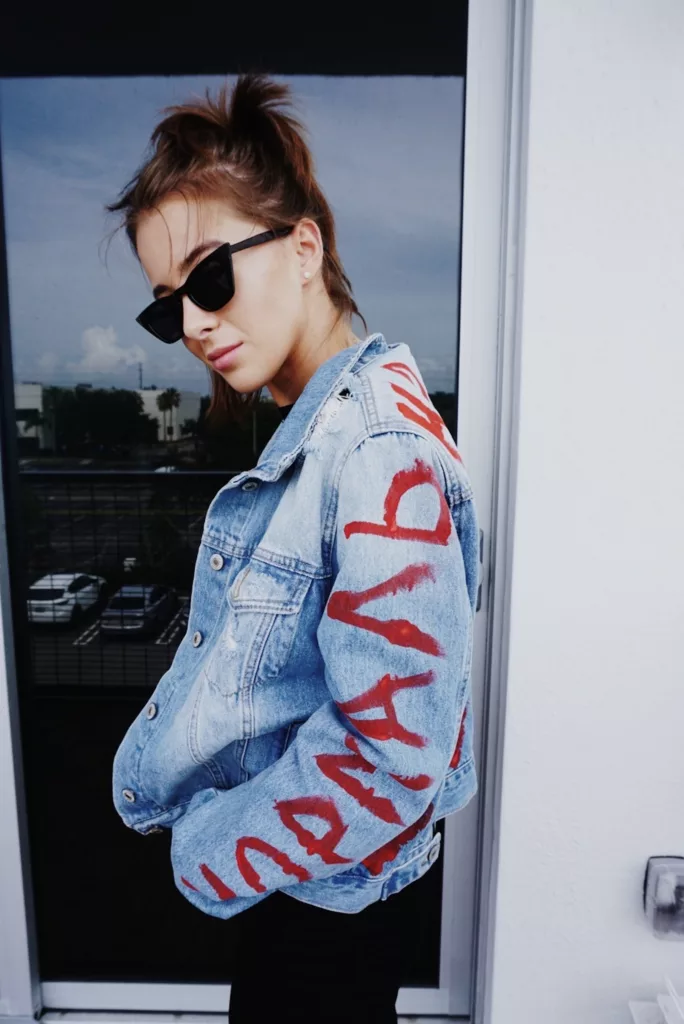
Add your touch to plain clothing items through embroidery or fabric painting. Embroider floral patterns, geometric designs, or your favorite quotes onto shirts, jackets, or skirts. Alternatively, use fabric paints or markers to create vibrant and customized designs.
Sweater Sleeve Leg Warmers

Repurpose old sweaters by cutting off the sleeves and turning them into cozy leg warmers. Add buttons, lace, or ribbons for extra flair. These leg warmers can be worn over tights or leggings for a fashionable winter accessory.
Jewelry from Fabric Scraps

Utilize fabric scraps to create unique jewelry pieces. Roll-up fabric strips to make fabric beads, then string them together to create necklaces or bracelets. Add buttons, sequins, or other embellishments for added charm.
Sweater Mittens

Upcycle old sweaters by transforming them into cozy mittens. Use a mitten template to trace and cut out the shape from the sweater fabric. Sew the pieces together, leaving an opening for your thumb. This is a perfect way to repurpose sweaters with holes or stains.
Remember, the possibilities for upcycling clothes are endless. Use your imagination and experiment with different techniques, fabrics, and embellishments to create your own unique upcycled fashion pieces.
Notable Brands and Projects
Reformation
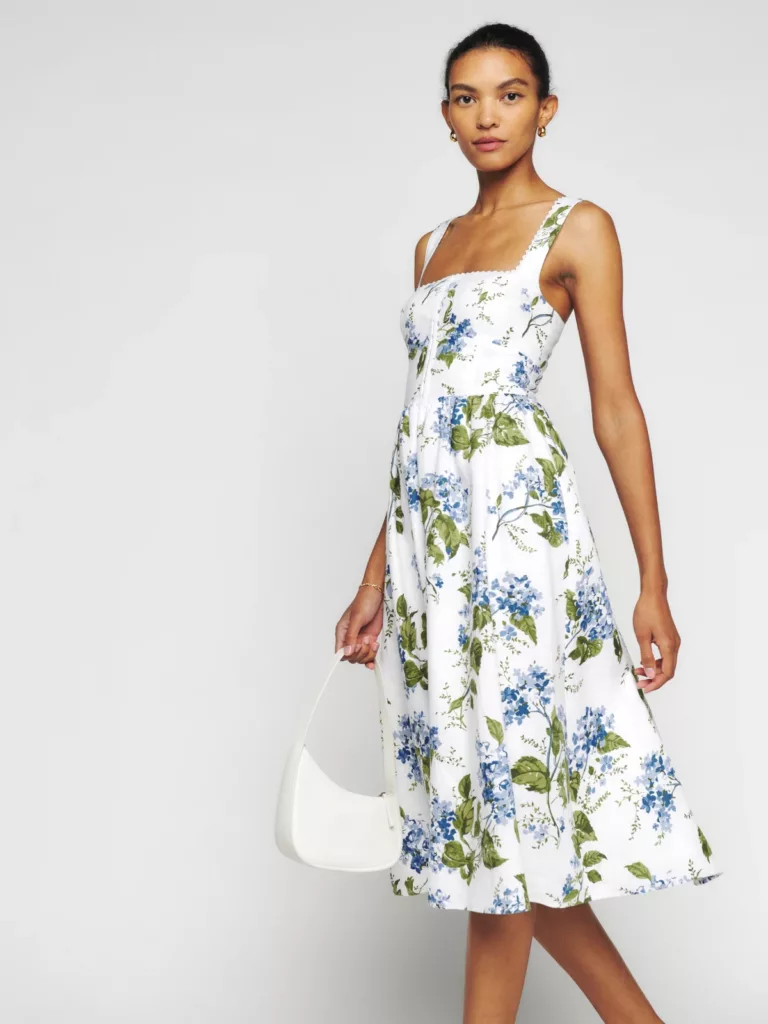
Reformation, a fashion brand recognized for its sustainability efforts, is actively involved in the creation of upcycled clothing.
The brand incorporates upcycled fabrics and vintage garments into their collections, giving new life to pre-existing materials. By utilizing upcycled clothing, they contribute to reducing waste and monitor the environmental impact of fashion production.
Reformation’s dedication to upcycling showcases its innovative approach to sustainable fashion, making it easier for consumers to choose stylish, eco-friendly options.
Eileen Fisher

Eileen Fisher is a renowned fashion brand that prioritizes sustainability and is actively engaged in the realm of upcycled clothing. They have a special program called “Renew” where they collect used garments and transform them into new designs using upcycling techniques.
The brand believes in extending the lifecycle of clothing and reducing waste by giving discarded items a second chance. By incorporating upcycled materials, they demonstrate their commitment to environmental responsibility and promote a circular approach to fashion.
Where Can You Buy Upcycled Clothing?
Well, now that we’ve covered what upcycling is, we’ll help you find places where you can grab some great upcycled garments for your wardrobe.
Thrift Stores
Thrift stores, secondhand shops, and consignment stores are great places to find upcycled clothing. These stores often have a wide variety of pre-loved garments that have been donated or consigned, offering unique and affordable upcycled fashion options. You can also buy from online thrift stores like Swap Up.
Online Marketplaces
Online platforms like Etsy, Depop, and eBay have a vast selection of upcycled clothing from independent sellers and designers. You can browse different listings and find upcycled pieces that suit your style preferences.
Sustainable Fashion Brands
Many sustainable fashion brands incorporate upcycling into their collections. These brands create new garments from recycled or upcycled materials or repurpose existing clothing items into new designs. Research and explore sustainable fashion brands to find some amazing options.
Local Artisan Markets and Fairs
Artisan markets and fairs often feature local designers and artisans specializing in upcycled fashion. These events provide an opportunity to meet the creators, learn about their upcycling process, and purchase unique upcycled pieces.
DIY Upcycling Workshops and Clothing Swaps
Consider attending DIY and upcycling workshops in your community or organizing one yourself! It can also be organized online and is a great way to engage with like-minded individuals and promote the cause. Alternatively, you can participate in clothing swaps and exchanges with friends, family, and local community groups. Here you can trade gently used clothing for items others have upcycled, giving your wardrobe a refresh.
How to Maintain Your Upcycled Clothing
Every clothing item in your wardrobe requires special care to ensure longevity and quality. Carrying and maintaining upcycled clothes demands the same care. So these tips can be used for all your clothes.
- Always check the care instructions on the garment label or any accompanying tags. In the case of Upcycled clothing, different care requirements might be followed due to the nature of the materials used or the way they were transformed. Follow the recommended care instructions to avoid damage.
- When possible, hand wash your upcycled clothes/clothes made from 100% natural fibers or use a gentle cycle on your washing machine. It prevents excessive agitation or stretching of delicate materials and intricate details.
- Opt for mild, eco-friendly detergents when washing your garments. Harsh chemicals can degrade the fabric or affect any handpainted or embellished designs on upcycled clothes. Avoid using bleach or fabric softeners unless specifically recommended in the care instructions.
- Spot cleaning can be effective without washing the entire garment for minor stains or localized dirt. Dab the stained area with a mild detergent solution and a clean cloth or sponge. Test in an inconspicuous area first to ensure it doesn’t cause any damage.
- To preserve the shape and structure of garments, it’s best to air dry them rather than using a dryer. Lay the clothes flat on a clean towel or hang them on a drying rack. If using a dryer, use the lowest heat setting to minimize potential damage.
- When not in use, store your clothing in a cool, dry place away from direct sunlight. Folding them neatly or hanging them on padded hangers can help maintain their shape. Avoid overcrowding in the closet to prevent creasing or stretching.
- Treat all your clothes with care to avoid undue strain or damage. Be mindful of any delicate embellishments, handpainted designs, or upcycled seams. Avoid excessive pulling or stretching when wearing or handling the garments.
- If you notice loose threads, missing buttons, or minor damages, take the time to repair and mend your clothing rather than throwing it away. It extends their lifespan and preserves their quality. Learn basic sewing techniques or consult a professional tailor if needed.
By following these tips, you can ensure that your wardrobe stays in good condition and lasts for years.
The Future of Upcycled Fashion
The fashion industry is repeatedly questioned for its substantial environmental, economic, and social impact on the planet. But can we turn around this trend of fast fashion and trendy new collections every season and make our consumption more conscious? What are the possible ways in which we can do it and at what scale?
Well, the answer is yes, we can turn around the fashion industry for good. Upcycling is one such answer to our question, an alternative that has existed for many years now and is used in various industries like furniture manufacturing, households, and even fashion production. But the time has come that we implement this practice at a large scale and see how beneficial it is in addressing the concerns related to the textile industry and for growing in terms of conscious consumerism and sustainability. The future of fashion is Upcycling.
Conclusion
Fashion is an integral part of our lives. Your wardrobe’s unique style gives you individuality, but can have a hidden toll that costs the planet dearly. To address these concerns, sustainable practice in the textile industry is a must. Therefore, upcycled clothing offers a powerful solution to the environmental and social challenges posed by the fast-paced fashion industry.
Each upcycled garment tells a story of repurposing, reinvention, and responsible consumerism. It is a tangible representation of our commitment to reducing waste, supporting ethical practices, and leaving a positive impact on the planet. So, let us embrace the world of upcycled clothing – explore thrift stores, online platforms, sustainable brands, and engage in DIY projects that give new life to our old garments.
Through our choices and actions, we can reshape the fashion industry into a conscious, inclusive, and environmentally friendly one. Join us on the journey of sustainable fashion! Check out more insightful articles on sustainable clothing, DIY projects, and eco-friendly fashion on Ecowiser.






